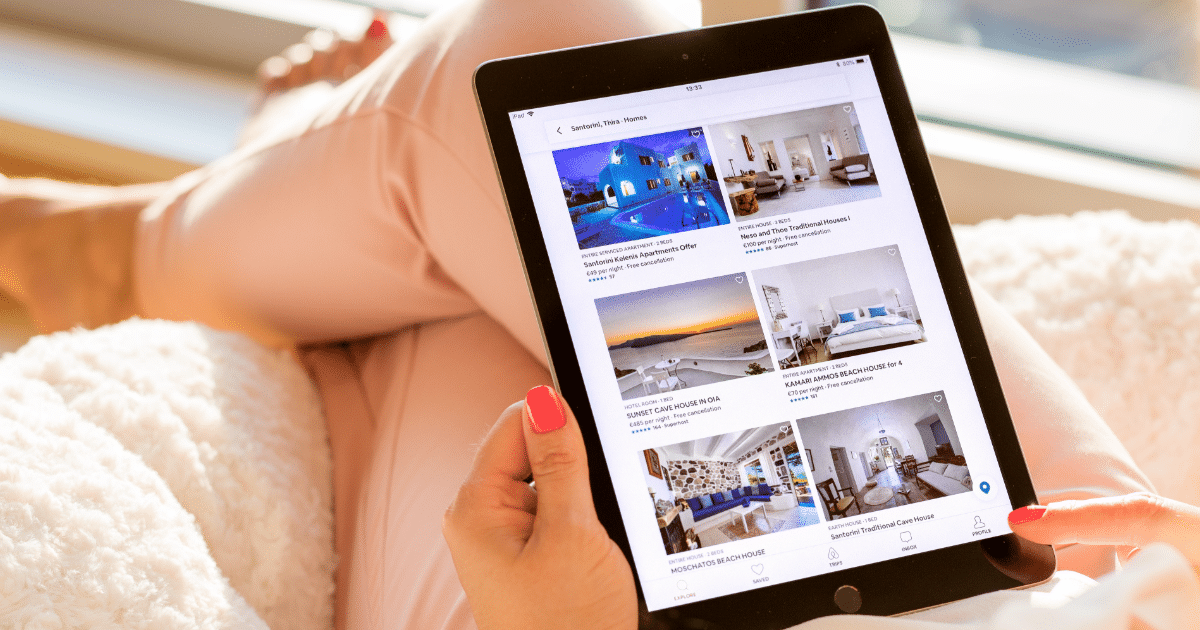Establishing an Always-On Presence: A B2B Display Advertising Strategy
August 8, 2025

B2B visibility isn’t just about being seen, it’s about being seen when it counts. While most companies pour resources into short-term campaigns, hoping for a quick burst of attention, they overlook the true power of an always-on B2B display advertising strategy. What if the secret to winning over decision-makers wasn’t just showing up at the right time, but showing up consistently, before they even know they need you?
Think about it: B2B decision-makers don’t have the luxury of slowing down to consider every brand that crosses their path. Your goal isn’t just to get their attention, but to remain relevant, top of mind, and visible across every digital touchpoint they frequent.
In this article, we’ll reveal how an always-on strategy doesn’t just boost your visibility, it transforms your brand into a reliable resource, nurturing relationships over time and guiding prospects from first impression to final decision.
What is an Always-On B2B Marketing Strategy?
The core of an Always-On concept is consistency and relevance.
An always-on strategy refers to creating continuous, consistent brand visibility across key digital channels, ensuring your message is present 24/7. It’s more than just running ads whenever it seems necessary, it’s about being in the right place, at the right time, with the right message, without interruption. This is considered the best b2b display advertising strategy as it reflects a shift from traditional “campaign-mode” advertising to a more sustained, ongoing effort.
For B2B marketers, always-on advertising isn’t just a tactic, it’s a mindset shift. It involves consistent messaging and relevant content across digital touchpoints to build trust and brand familiarity over time. Think about it: How many decision-makers are in the midst of a lengthy sales cycle, juggling multiple research sources and exploring different solutions? By staying visible and providing valuable content consistently, you ensure that your brand becomes a reliable reference during their decision-making process.
Unlike traditional campaigns, which may be based on short bursts of activity, an always-on strategy builds long-term relationships by keeping your brand top-of-mind and engaging decision-makers when they are ready to take action.
Choosing the Right Display Advertising Strategy for an Always-On Presence
An always-on display advertising strategy thrives on the integration of multiple digital touchpoints. It’s not enough to just have display ads running on one platform. For maximum impact, your ads need to be visible on a variety of platforms that decision-makers frequent, whether it’s social media, industry-specific websites, or OTT content platforms.
- Cross-Channel Consistency: Your display ads should align with your broader marketing strategy, from email campaigns and content marketing to social media and even retargeting efforts. Each touchpoint should reinforce the message that your brand is a trusted resource, offering the decision-maker a consistent experience across platforms.
- Targeting with Precision: It’s essential to have robust audience segmentation in place to ensure your display ads are being served to the right people at the right time. This is where B2B data plays a critical role in enabling targeted display ads. By using data-driven insights to segment your audience based on company size, industry, or buying intent, you ensure that your ads don’t just reach anyone, they reach the right decision-makers in the ideal context.
- Optimizing Ad Placements: Whether through programmatic advertising or direct buys on specific websites, always-on strategies allow you to continuously place your ads where they will perform best. This involves strategic ad placement across a variety of channels that speak to the needs of your audience at different touchpoints in their buyer journey.
To truly maximize an always-on display advertising strategy, you need to go beyond traditional placements. Make sure you’re integrating display ads into a holistic marketing mix, where they complement other marketing channels like email, content, and ABM.
How Do You Apply This Display Advertising Technique?
The key is focusing on B2B engagement across the buyer’s journey.
The core idea behind always-on display advertising in B2B is consistent engagement, from the moment a prospect first hears about your brand, to when they’re evaluating solutions, and even after they’ve converted into a customer. It’s about guiding them through the funnel with an ongoing presence that meets them where they are in their journey.
- Top-of-Funnel (TOFU) Awareness: At this stage, your display ads should focus on introducing your brand and offering high-level educational content. Think whitepapers, blogs, webinars, or case studies that provide real value, without pushing for an immediate sale. The goal is to build awareness and establish credibility.
- Middle-of-Funnel (MOFU) Consideration: Once prospects are familiar with your brand, display ads should provide more specific content that directly addresses their pain points and offers solutions. This might include product demos, testimonials, or a deeper dive into your product’s unique features. At this stage, you want to engage the decision-makers who are actively evaluating options.
- Bottom-of-Funnel (BOFU) Decision-Making: For prospects ready to make a decision, your display ads should push them toward conversion with strong calls to action (CTAs) like “Request a Demo” or “Download Free Trial.” This is where retargeting ads come into play, serving tailored messages to people who have interacted with your content, ensuring they don’t forget about you.
Picture you’re leading the marketing efforts for a B2B SaaS company providing a powerful project management tool. For months, you’ve run campaigns around specific product launches, timed offers, and quarterly promotions. Every time you wrap up a campaign, there’s a noticeable gap in your engagement. Visibility drops, and with it, so does your momentum. You’re not just missing out on immediate conversions. you’re missing the chance to continuously nurture the relationships that have the potential to become long-term customers.
Now, imagine flipping the script and shifting to an always-on display advertising strategy. Instead of stopping and starting with sporadic bursts of activity, you set up a continuous, integrated approach that puts your brand in front of decision-makers across multiple channels, at all times. Whether it’s on LinkedIn, industry-specific blogs, or retargeting on partner websites, your display ads are showing up.
What happens next? Prospects see your brand not once, but multiple times, on multiple platforms. Each interaction deepens the relationship, keeping your brand relevant and top-of-mind as decision-makers move through their buying journey. As these prospects engage, downloading whitepapers, watching product demos, or reading case studies, your ads adapt dynamically, providing them with tailored content at each step of their decision-making process.
Rather than launching and closing campaigns, you’ve created a continuous thread of visibility, engagement, and trust. Your ads aren’t just a blip in the radar, they’re the constant presence that gently guides decision-makers from the initial awareness stage all the way to the final decision. This always-on approach builds your brand into something they don’t just recognize, it’s something they rely on when it’s time to make a choice.
For B2B marketers, this is where the true power of display advertising lies. It’s not about the one-time burst of a campaign, it’s about consistency, relevance, and sustained visibility. When your brand is always there, it’s no longer competing for attention; it’s simply expected as the trusted partner when the decision is ready to be made.
How Do You Optimize Display Advertising? Measuring Success in an Always-On Strategy
Always-on display advertising isn’t a set-it-and-forget-it campaign. It’s a dynamic, evolving strategy that requires continuous monitoring and optimization. The ability to adjust your approach in real-time is what differentiates successful always-on campaigns from ones that falter.
- Real-Time Performance Tracking: B2B marketers need to monitor key performance metrics (KPIs) such as impressions, click-through rates (CTR), engagement rates, and conversion rates to understand the performance of their ads. The beauty of an always-on B2B marketing strategy framework is that you can adjust the targeting, message, and creative elements based on the data you collect.
- A/B Testing: This is a crucial part of optimization. Running A/B tests on ad creatives, headlines, and calls-to-action (CTAs) will help identify what resonates best with your audience and increase your ad’s effectiveness over time.
- Adjusting Ad Frequency and Placement: Ad fatigue is a real challenge in any always-on campaign. Display ads need to be refreshed regularly to keep them engaging and effective. Frequency capping ensures that the same decision-maker isn’t overwhelmed with the same ad.
Ultimately, the success of your always-on strategy should be measured by ROI, how effectively your ad spend translates into qualified leads and conversions. By linking ad spend to lead generation and sales outcomes, you can demonstrate the true value of your always-on campaigns to leadership.
Combining analytics from B2B data and platform insights provides an accurate picture of what’s working. Considering B2B marketing strategy examples, you may discover that LinkedIn ads are more effective at the awareness stage, while retargeting display ads on industry websites push leads toward conversion.
Using AI-Powered Insights for Measuring and Optimizing Display Ad Campaigns
At DemandScience, we understand staying competitive requires more than just running ads. It requires leveraging the power of AI-driven insights to continuously measure, optimize, and adapt display advertising campaigns. With our advanced AI tools, we empower marketers to move beyond traditional methods of evaluation and unlock smarter, more effective strategies for driving results.
Real-Time Performance Tracking with AI
AI insights allows us to track display ad performance in real-time, enabling marketers to make data-driven decisions on the fly. We can monitor key metrics such as impressions, click-through rates (CTR), conversion rates, and more, instantly identifying underperforming ads. This quick feedback loop allows for immediate optimizations, ensuring that campaigns remain aligned with business goals and customer needs. With our AI insights, display advertising campaigns are never left to run on autopilot—they’re continuously refined for optimal performance.
Dynamic Creative Optimization for Personalized Engagement
AI insights also enables us to implement dynamic creative optimization (DCO) in display ads. By analyzing user behavior and preferences, our AI-driven systems automatically adjust ad elements, such as headlines, visuals, and CTAs, to deliver the most personalized content to each viewer. This level of customization not only enhances engagement but also increases the likelihood of conversion by ensuring that the right message is reaching the right audience at the right time.
Optimizing Ad Spend with Predictive Analytics
With predictive analytics, we at DemandScience are able to forecast which segments and ad placements will yield the best ROI. Our AI tools analyze past campaign data and recognize patterns, allowing us to allocate budget more effectively. By optimizing where and when to display ads, we maximize ad spend efficiency, ensuring that every dollar spent contributes to meaningful engagement and conversions.
Continuous Learning and Adaptation
Perhaps the most powerful feature of our AI tools is their ability to learn and adapt over time. As more data is processed, our AI algorithms get better at predicting outcomes and optimizing campaigns for sustained success. This allows us to create an ever-evolving advertising strategy that continuously improves and scales based on real-time performance.
At DemandScience, we believe in the power of AI to transform display advertising from a static, one-time campaign to a dynamic, always-optimizing engine for business growth. With our AI-powered insights, B2B marketers can achieve a level of precision and performance that was once unimaginable.
Overcoming the Challenges of an Always-On Strategy
Budget Management and Scaling
Running an always-on strategy can seem daunting when it comes to budgeting. However, with the right optimization techniques in place, the cost per lead will decrease over time. The key is to start small, test extensively, and scale your budget based on performance.
For example, programmatic buying offers great flexibility and cost efficiency, allowing B2B marketers to manage ad spend dynamically while ensuring that every impression and click is strategically targeted.
Keeping Content Fresh
Another challenge of an always-on strategy is maintaining relevance. Ads that are seen too frequently or stay static for too long can lose their impact. Keeping your ads fresh with updated content, seasonal offers, or new product features can help prevent ad fatigue.
Conclusion
An always-on B2B display advertising strategy is about more than visibility; it’s about consistent engagement that nurtures relationships over time and builds brand trust in a way that makes your brand an indispensable part of your audience’s decision-making journey. By integrating display ads seamlessly into your broader marketing ecosystem, you ensure that your message is always in the right place, at the right time, guiding prospects through every stage of their buying process.
But here’s the key: optimization, data insights, and continuous iteration. An always-on approach requires constant refinement, fine-tuning your messaging, adjusting your budget allocation, and staying attuned to shifts in your audience’s needs. It’s not a set-and-forget strategy. It’s a dynamic, evolving approach that thrives on real-time learning and adaptation.
For B2B marketers, the value of an always-on strategy goes beyond fleeting impressions or short-term sales goals. It positions your brand as a trusted partner, a reliable presence that your prospects can turn to, no matter where they are in their buying journey. It’s not just about staying top of mind; it’s about being the first brand they think of when the time comes to make a decision.
Leverage an Always-On Strategy for Multi-Channel Success
Supercharge your B2B marketing strategies today.










